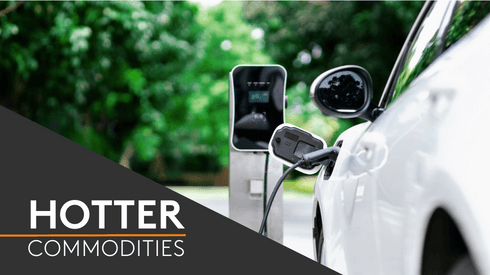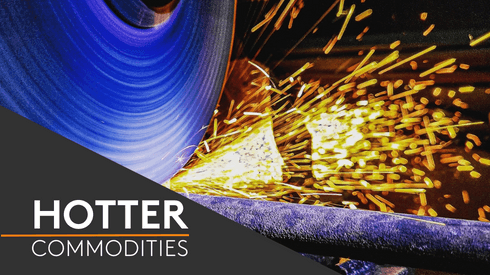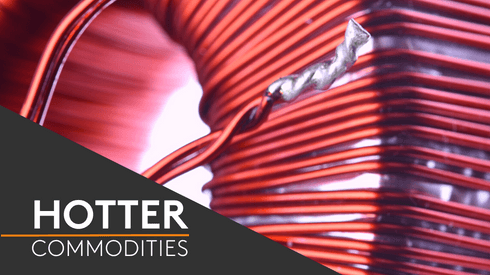Copper may be exempt from reciprocal tariffs, but the indirect impacts could lead to delayed or deferred investments over time. This is what the CEO of German producer Aurubis told Fastmarkets during the annual CESCO industry week in Santiago, Chile.
Section 232 tariffs on copper would meanwhile be very counterproductive, Toralf Haag said.
The company itself sells very little into the US market from Europe. However, Haag said that many of its European customers are affected.
“Aurubis is well positioned in these dynamic times. The direct impact by the tariffs is very limited as copper was exempt, and we do less than 1% of our sales from Europe to the US,” he said.
“But the indirect impact might be course huge, because many of our European customers are affected by tariffs. We closely monitor the effects of uncertainty the situation creates,” Haag added.
Further tariffs on China
The US has imposed 104% tariffs on imports from China. These, in turn will have 84% tariffs on imports from the US from 00:01 ET on Thursday April 10. Additional reciprocal tariffs, on top of the 10% universal tax, by the US on 60 other countries have also gone into effect.
“When we as Aurubis make large investments but our customers don’t invest anymore, they need less copper. The current uncertainty might lead to delayed or deferred investments in the coming years,” he said.
Aurubis produces more than 1 million tonnes per year of copper cathodes with a purity of 99.99% at its operations in Europe. It then processes most of its copper cathodes into products such as wire rod and shapes.
An ongoing Section 232 investigation into copper could lead to the introduction of tariffs at some point this year.
“The US department of Energy has defined copper as critical raw material. It is essential to secure energy supply and many defense applications,” Haag said.
“Section 232 on copper would thus be very counterproductive as the US cannot meet its copper smelting needs domestically, so it has to import cathodes. If there are tariffs, it is going boost inflation — it’s not helping anybody,” he added.
The various copper industry associations are providing feedback to the governments in Europe, Haag said, rather than Aurubis directly.
Haag was unfazed by the increase in copper stocks in the US that has arisen in recent months in an attempt to beat tariffs and possible Section 232 action.
Demand for copper still strong
Despite the trade tensions, Haag said that Europe and the US are demonstrating stable, relatively strong copper demand. In particular the energy transmission segment of the market, followed by electromobility, digitization and electronics. Consumption of copper for data centers and AI is growing rapidly and will be significant, he noted.
“Copper demand in Europe is stable. Of course, the automotive industry is in transformation, but that’s compensated for by infrastructure projects, the electronics industry and electromobility,” he added.
Haag noted a recent €500 billion ($535 billion) spending package in Germany which will span a decade and upgrade infrastructure. This will be across transport, energy, defense and digitization.
“This is positive for Aurubis; these investments mean more demand for copper. We consciously made the decision to set up the Augusta plant in the US state of Georgia before this whole tariff situation began — we went to the US because of the effectiveness of the market and the great availability of input material,” Haag told Fastmarkets.
“The US market remains very attractive. Our new copper site is the first of its kind in the US and puts us in pole position for growth in this market,” he said.
Secondary copper smelting
The secondary copper smelter in Augusta is planned to start ramp-up at the end of this fiscal year, with a second phase scheduled for next year.
“We are on track and plan to finish Phase 1 before the end of the fiscal year, which will make capacity available for the processing of 90,000 tonnes [per year] and then Phase 2 will come onstream in 2026, doubling the processing capacity to 180,000 tonnes per year,” Haag said.
“But it is a challenge, of course, because it’s a greenfield plant,” he noted, adding that the copper produced in Augusta will be either sold in the US or shipped to Europe.
Aurubis does not receive large incentives for its projects in either the US or in Germany, Haag noted. And, the decision to invest in Augusta was made prior to the Inflation Reduction Act. The project nonetheless was well-supported by the authorities and decision makers to find land, apply for permits, get in touch with universities and so on, Haag said.
In Germany, the company had some support on selective research and development and sustainability projects, but nothing further in general.
Black mass recycling in Germany
The company’s pilot black mass recycling plant in Hamburg, Germany, has been operational since March 2022. It has developed a proprietary hydrometallurgical process that has successfully extracted battery raw materials from black mass.
As a result, Aurubis is now working on building a demonstration plant, Haag said.
“We have invested to build a demo plant. The process is almost finished, and we are very happy with the results. The reaction of customers is very good, and we are able to retrieve an impressive amount of raw materials – up to 95% on average across all metals,” he told Fastmarkets.
“The market for black mass recycling however will not substantially be there until after 2030. So, we are prepared for that phase and further optimize our processes; we watch the market closely and believe we have a strong competitive advantage with our unique process, which will add value to the industry,” he said.
A potential black mass recycling plant would be in Europe, Haag said. This is where the market for electric vehicles (EV) is far stronger than in the US.
In Hotter Commodities, special correspondent Andrea Hotter covers some of the biggest stories impacting the natural resources sector. Read more coverage on our dedicated Hotter Commodities page here.





